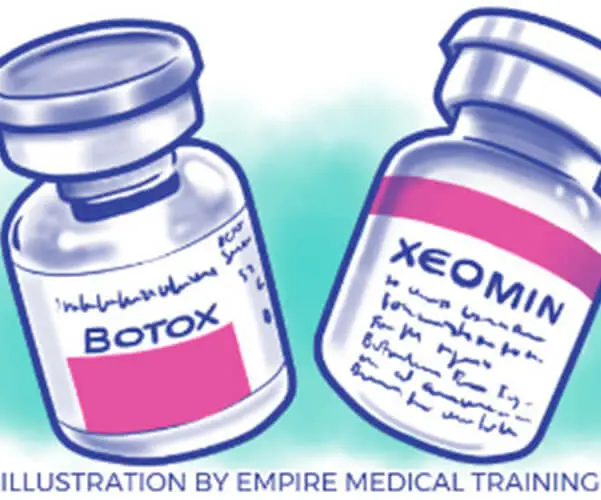Top Benefits of Xeomin®: Why Choose This Botox Alternative?
By Dr. Stephen Cosentino
PRESIDENT OF EMPIRE MEDICAL TRAINING
Botox® is the most popular injectable cosmetic treatment available in the United States. Each year, medical providers perform millions of Botox injections to treat a wide range of cosmetic and musculoskeletal complaints. Botox has more than a dozen FDA-approved indications and is safely used “off-label” for a number of others.
Botox doesn’t have the market for minimally invasive cosmetic treatments to itself, however. Several other medications have the same active ingredient: botulinum toxin type A, formally known as incobotulinum toxin type A. They include Xeomin® and Dysport®.
Here, we'll take a closer look at Xeomin in particular. As we’ll see, Xeomin is very similar to Botox, but it has some important differences that some patients and providers prefer.
Xeomin Benefits Explained — Why Choose It Over Botox
So, how do Xeomin benefits compare with Botox and Dysport? These are the major differences:
- Naked Toxin (No Additives): Unlike Botox, Xeomin is a “naked toxin.” The preparation contains only the active ingredient (botulinum toxin A) with no additives or preservatives. While Botox is widely regarded as safe, this is reassuring for patients concerned about medication additives.
- Lower Side Effect Risk: Because Xeomin is a naked toxin, it has an even lower risk of complications than Botox. The other ingredients in Botox may cause allergic reactions in a small number of patients and may stimulate an immune response that, over time, makes the facial muscles less responsive to the medication.
- Easier to Transport and Store: Unlike Botox, Xeomin doesn’t need to be refrigerated. That means it’s easier to transport and store, making it more accessible for far-flung patients.
- Specific Indications: As a botulinum toxin A preparation, Xeomin is effective in treating a variety of fine lines and wrinkles, such as crow’s feet and smoker’s lines. But it’s particularly effective for treating glabellar lines — those ‘11’ lines between the eyes. This makes things simpler for patients: If you want to treat glabellar lines and you’re concerned about side effect risk, Xeomin is the clear choice.
What to Expect From Xeomin Treatment
The Xeomin treatment process is similar to Botox. The basic order of operations is this:
- An initial consultation during which the provider determines if you’re a good candidate for treatment
- A discussion of your cosmetic complaints and needs
- Treatment planning, including mapping the injection sites
- The actual procedure, which occurs in an outpatient setting and requires only local anesthetic
- Follow-up monitoring in the following days and weeks
You can typically return to work the day after your procedure, though noticeable swelling may persist for a few days. Results generally last 3 to 6 months, depending on the patient and area treated.
Potential Risks of Xeomin
Just as the effects of Xeomin are similar to Botox, the potential risks are similar as well. Despite the lower risk of allergic reaction and immunity to treatment over time, documented Xeomin side effects and complications have included:
- Temporary redness and itching around the injection site
- Swelling and bruising around the injection site
- Temporary difficulty making facial expressions
- Muscle weakness (a more serious issue that may require medical intervention)
To minimize your risk of these potential complications, always work with a board-certified provider who has completed advanced Botox and dermal filler training. And if you’re not sure Xeomin is right for you at this moment, consider these alternatives to Xeomin treatment:
- Hyaluronic acid fillers
- Minimally invasive thread lifts
- Deep skin care procedures that can temporarily reduce the appearance of lines and wrinkles
- Topical skin care
- Surgical facelift (plastic surgery) — though this is much more expensive than any of the above


